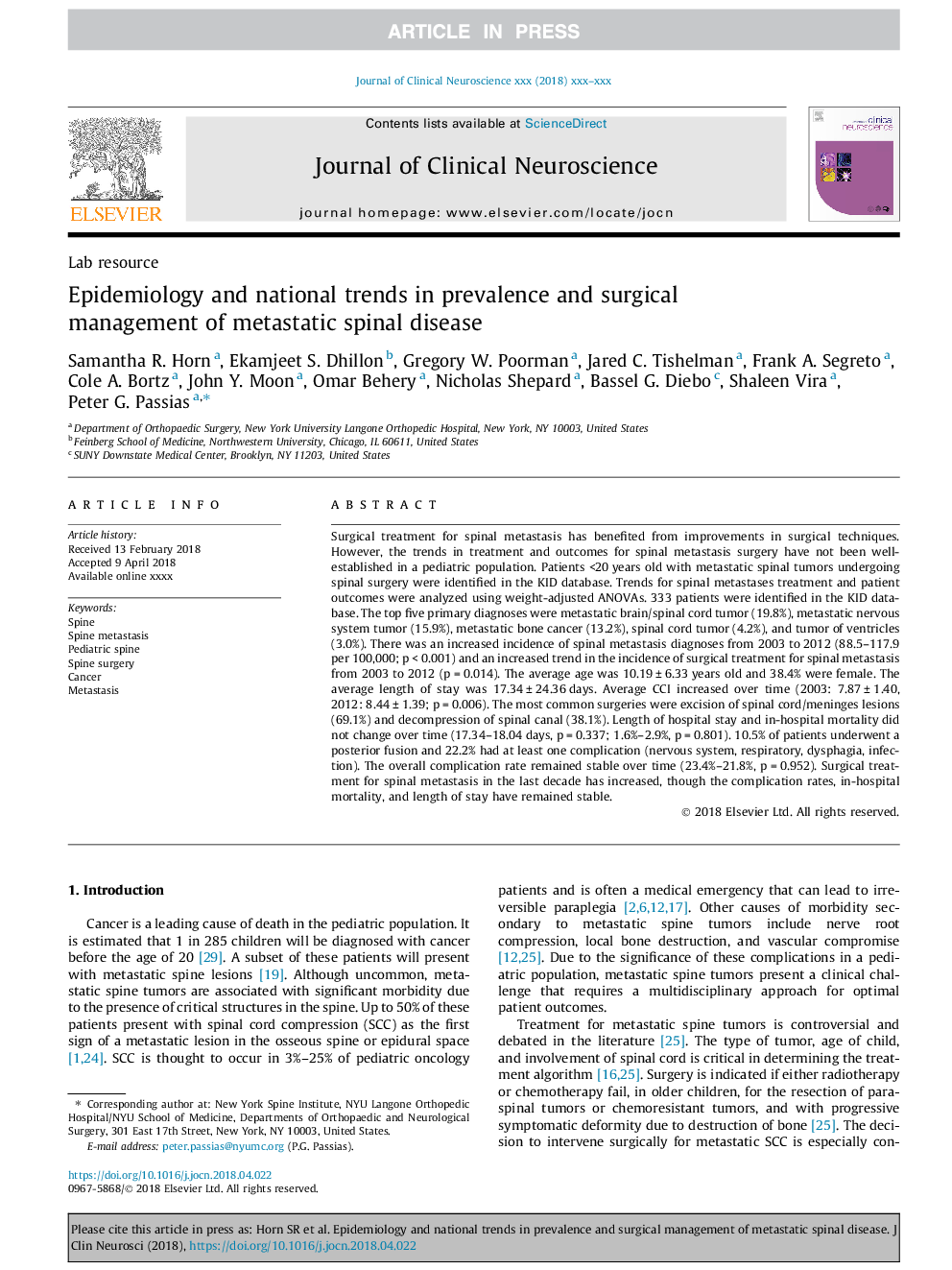| Article ID | Journal | Published Year | Pages | File Type |
|---|---|---|---|---|
| 8685051 | Journal of Clinical Neuroscience | 2018 | 5 Pages |
Abstract
Surgical treatment for spinal metastasis has benefited from improvements in surgical techniques. However, the trends in treatment and outcomes for spinal metastasis surgery have not been well-established in a pediatric population. Patients <20â¯years old with metastatic spinal tumors undergoing spinal surgery were identified in the KID database. Trends for spinal metastases treatment and patient outcomes were analyzed using weight-adjusted ANOVAs. 333 patients were identified in the KID database. The top five primary diagnoses were metastatic brain/spinal cord tumor (19.8%), metastatic nervous system tumor (15.9%), metastatic bone cancer (13.2%), spinal cord tumor (4.2%), and tumor of ventricles (3.0%). There was an increased incidence of spinal metastasis diagnoses from 2003 to 2012 (88.5-117.9 per 100,000; pâ¯<â¯0.001) and an increased trend in the incidence of surgical treatment for spinal metastasis from 2003 to 2012 (pâ¯=â¯0.014). The average age was 10.19â¯Â±â¯6.33â¯years old and 38.4% were female. The average length of stay was 17.34â¯Â±â¯24.36â¯days. Average CCI increased over time (2003: 7.87â¯Â±â¯1.40, 2012: 8.44â¯Â±â¯1.39; pâ¯=â¯0.006). The most common surgeries were excision of spinal cord/meninges lesions (69.1%) and decompression of spinal canal (38.1%). Length of hospital stay and in-hospital mortality did not change over time (17.34-18.04â¯days, pâ¯=â¯0.337; 1.6%-2.9%, pâ¯=â¯0.801). 10.5% of patients underwent a posterior fusion and 22.2% had at least one complication (nervous system, respiratory, dysphagia, infection). The overall complication rate remained stable over time (23.4%-21.8%, pâ¯=â¯0.952). Surgical treatment for spinal metastasis in the last decade has increased, though the complication rates, in-hospital mortality, and length of stay have remained stable.
Related Topics
Life Sciences
Neuroscience
Neurology
Authors
Samantha R. Horn, Ekamjeet S. Dhillon, Gregory W. Poorman, Jared C. Tishelman, Frank A. Segreto, Cole A. Bortz, John Y. Moon, Omar Behery, Nicholas Shepard, Bassel G. Diebo, Shaleen Vira, Peter G. Passias,
